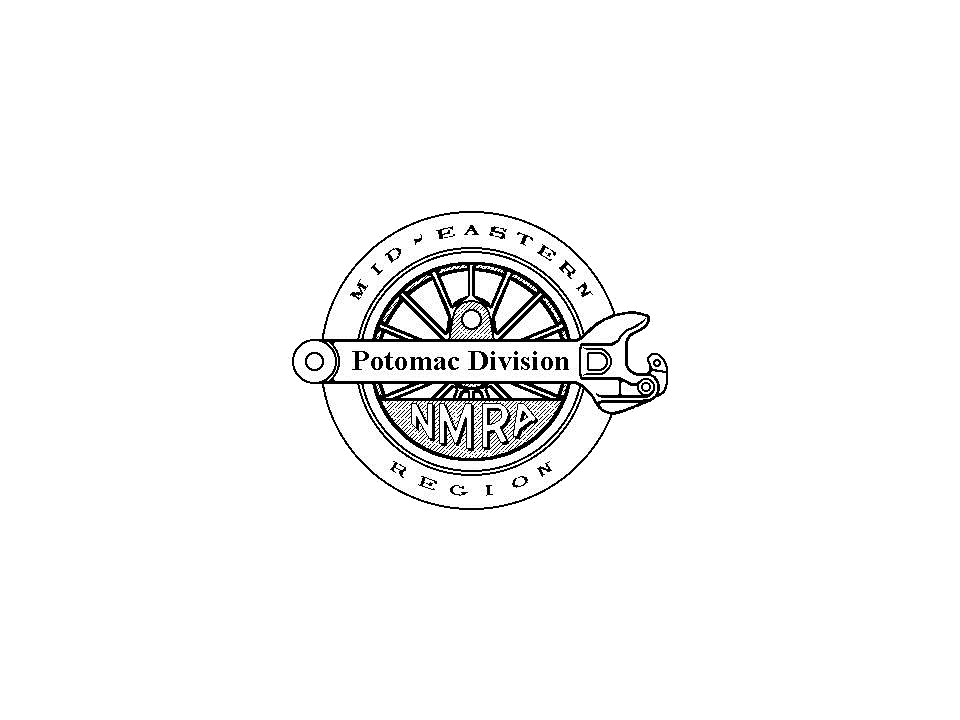A RETURN TO THE VALLEY
The Great Valley of Virginia, as the Shenandoah Valley is sometimes
called, has apparently become a very popular location to model, as
attested to by our second successive tour of a home layout set in that
area. This time it was the HO scale Norfolk Southern Connector we were
seeing, the work of Ernie Little, a retired Prince William County,
Virginia Fire Department Battalion Chief and Fire Marshall who now
lives in Manassas. Ernie’s railroad represents a more recent time frame
and a more free-lanced concept, with fictional towns replacing the real
ones actually there. His version stretches from Roanoke up the length
of the valley and beyond to a terminus at Nickel City, Pennsylvania, a
great name for a small town even if it isn’t a real one.
The current railroad is 20’ by 16’ arrangement with 200 feet of
continuous single track main line, one lengthy passing siding, staging
tracks, and numerous yards; there are future plans for a second level
to accommodate dual track operation. The bench work is L-girders
supporting ½ inch plywood or ½ inch plywood with ½ inch homosote,
depending upon the structural requirements. The track is Atlas code 100
flex track on a cork road bed, all of which is ballasted. Turnouts are
Atlas, Shinohara, and Peco, with either hand-throws or Tortoise slow
motion switch machines. Locomotives operate on a Digitrax DCC system
that operates on radio, infrared, or plug in throttles.
The
layout began as a simple double tracked oval and expanded from there,
analogous to the way that John Allen’s initial four foot by seven foot
G&D (Ancient Modeler #7), eventually evolved to fill most of the
room, and the original section can be easily identified apart from the
rest. Although nothing was moving while I was there, a Norfolk Southern
GP-9 with a sound unit was idling on a siding, and a pair of Amtrak
FP-40’s were parked on the original section, both with freight trains.
In addition to the trains on the layout there was a case on the wall
with several varied first generation diesels, both in Southern green
and C&O yellow and blue, and a Southern 4-6-2 decorated for the
Crescent Limited. Ernie has successfully resisted the impulse to fill
up every available space on the layout. On line structures and
industries include a quarry producing and shipping gravel and other
materials with appropriately related heavy trucks and earth moving
equipment, an intermodal service facility with its overhead traveling
crane, an oil depot with large tanks and tank cars, and typical small
town stores and business along both sides of the main street in one of
those fictional small towns set in the center of the earlier layout
that reflects the architecture of the Shenandoah Valley as it still
appears today. There were ample opportunities for switching and
operations should one chose to pursue that path, all spread around the
layout in such a way that it didn’t appear at all crowded, and there
was more than adequate space to move around the room for viewing and
operating convenience. And there’s a moveable three foot section of the
main line can be raised 90 degrees vertically to allow access through
an inside door to the garage.
Ernie has been working on becoming a Master Model Railroader and has
four NMRA achievement program certificates to his credit so far:
Association Volunteer, Engineer-civil, Engineer-electrical, and Chief
Dispatcher; he is presently directing his efforts towards earning an AP
scenery certificate.
Generally speaking, most modelers feel it’s more desirable to have a
larger space in which to work when it comes to constructing a model
railroad; unfortunately, that larger space isn’t available to all of
us. However, you can build a realistic layout in just about any sized
space if you limit yourself to the essential elements that are
important to you and avoid any superfluous clutter that distracts from
your primary modeling objectives; smaller can work well too, as Ernie
Little has demonstrated with his Norfolk Southern Connector railroad.
Bob Rosenberg

